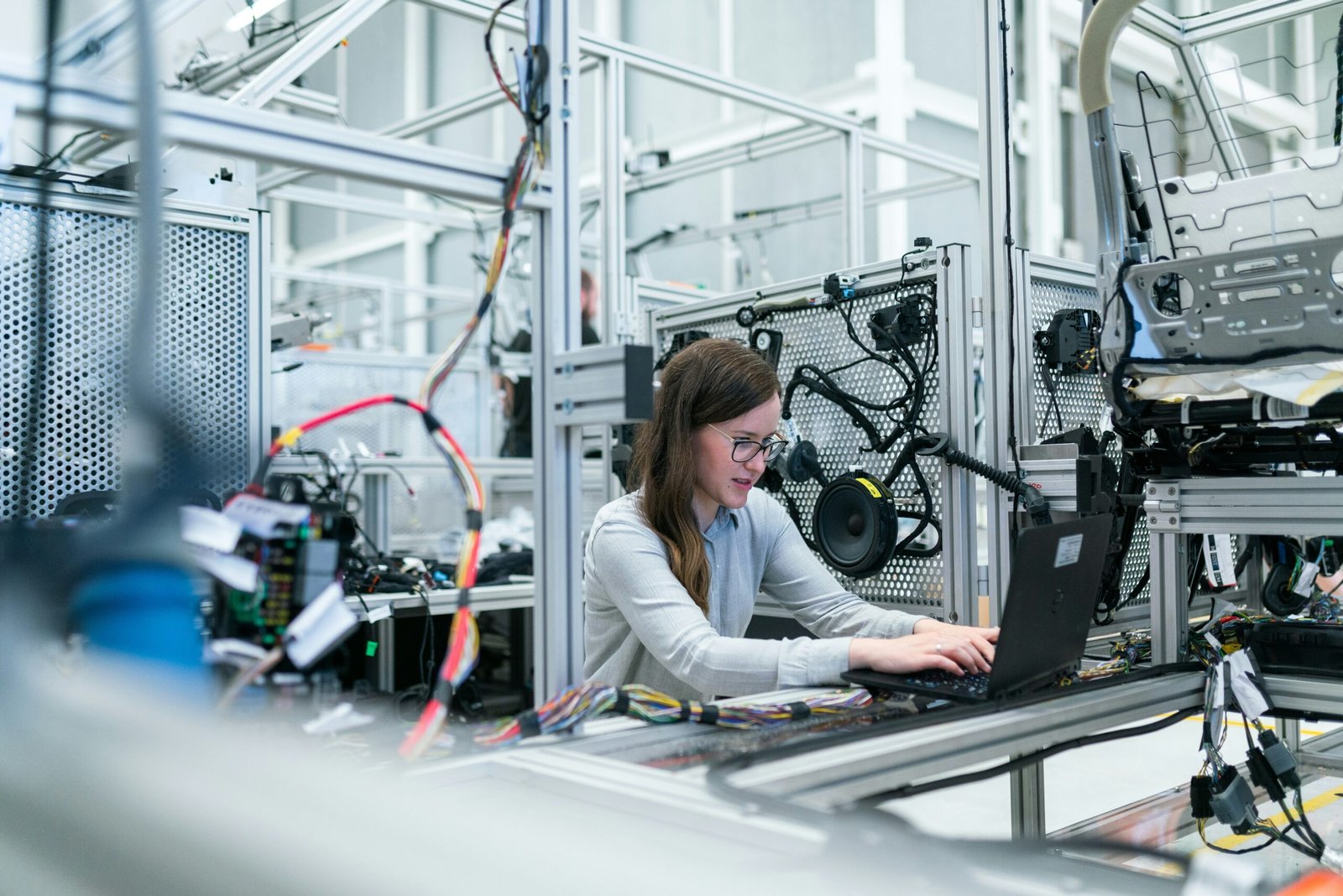
One of the most notable ways in which technology has transformed education is through the introduction of online learning platforms and virtual classrooms. With the advent of the internet, students now have access to a vast array of educational resources and materials at their fingertips. They can enroll in online courses, participate in virtual discussions, and even earn degrees from reputable institutions without ever setting foot in a traditional classroom.
Furthermore, technology has also revolutionized the way teachers deliver instruction. Gone are the days of relying solely on textbooks and chalkboards. Nowadays, educators have access to a wide range of tools and software that enhance their teaching methods and make lessons more engaging and interactive. For example, interactive whiteboards allow teachers to display multimedia content, such as videos and interactive simulations, to illustrate complex concepts and cater to different learning styles.
Moreover, technology has also paved the way for personalized learning experiences. With the help of adaptive learning software and intelligent tutoring systems, students can receive individualized instruction tailored to their specific needs and learning pace. This not only ensures that students grasp the material more effectively but also allows teachers to identify areas where students may be struggling and provide targeted support.
Another significant impact of technology in education is the ability to foster collaboration and communication among students and educators. Online platforms and tools enable students to collaborate on group projects, share ideas, and provide feedback to one another. This not only enhances their critical thinking and problem-solving skills but also prepares them for the collaborative nature of the modern workforce.
Furthermore, technology has also made education more accessible to individuals with disabilities. Assistive technologies, such as screen readers and speech recognition software, have made it possible for students with visual or hearing impairments to fully participate in the learning process. Additionally, online platforms have made it easier for individuals with physical disabilities to access educational resources without the need for physical accommodations.
In conclusion, technology has revolutionized modern education in numerous ways. From online learning platforms to personalized instruction, technology has enhanced the learning experience for students and provided new opportunities for educators. As technology continues to advance, it is crucial for educational institutions to embrace these innovations and adapt their teaching methods to ensure that students are equipped with the skills and knowledge needed to thrive in the digital age.
Enhancing Teaching Methods
One of the primary ways technology has transformed education is by enhancing teaching methods. Traditional classroom lectures are no longer the only means of delivering information to students. With the advent of technology, educators now have access to a wide range of tools and resources that can be used to create engaging and interactive lessons.
For instance, multimedia presentations, online videos, and interactive simulations can be used to explain complex concepts in a more visual and understandable manner. This not only helps students grasp difficult concepts more easily but also makes the learning process more enjoyable and interactive.
Furthermore, technology has made it possible for educators to personalize their teaching methods to cater to the individual needs and learning styles of their students. With the help of online platforms and learning management systems, teachers can provide customized learning materials, assignments, and assessments, ensuring that each student receives the support and guidance they need to succeed.
Moreover, technology has also opened up new avenues for collaboration and communication among students and teachers. Online discussion forums, video conferencing tools, and collaborative document editing platforms allow students to connect with their peers and teachers, share ideas, and work together on projects, regardless of their physical location. This not only fosters a sense of community and teamwork but also prepares students for the digital world they will be entering upon graduation.
In addition, technology has revolutionized the assessment and feedback process in education. With the help of online quizzes, automated grading systems, and data analytics tools, teachers can efficiently evaluate students’ progress and provide timely feedback. This allows for a more individualized approach to learning, where students can track their own performance and identify areas for improvement.
Furthermore, technology has made it possible for educators to incorporate real-world examples and case studies into their lessons. With access to online databases, virtual field trips, and interactive simulations, teachers can bring the outside world into the classroom, making the learning experience more relevant and practical. This not only helps students understand the application of concepts in real-life situations but also prepares them for the challenges they may face in their future careers.
Overall, technology has revolutionized teaching methods by providing educators with a plethora of tools and resources to create engaging, personalized, and interactive lessons. By leveraging technology effectively, teachers can enhance the learning experience for their students, preparing them for success in the digital age.
Moreover, technology has revolutionized the concept of personalized learning. Traditional classrooms often follow a one-size-fits-all approach, where teachers deliver the same content to all students, regardless of their individual needs and learning styles. However, with the aid of technology, educators can now customize learning experiences to cater to the unique requirements of each student.
Adaptive learning software, for example, uses algorithms to analyze students’ performance and provide personalized recommendations and resources. This allows students to focus on areas where they need improvement and progress at their own pace. Furthermore, technology enables the integration of multimedia elements such as videos, interactive simulations, and virtual reality, making the learning process more engaging and effective.
In addition to expanding learning opportunities for students, technology has also transformed the role of educators. Teachers are no longer just providers of information; they now serve as facilitators and guides in the learning journey. With access to online resources and collaborative platforms, educators can curate and share a wide range of educational materials, fostering a culture of collaboration and knowledge-sharing among students and teachers alike.
Furthermore, technology has enhanced the assessment and feedback process in education. Traditional assessments often rely on written exams and standardized tests, which may not accurately measure students’ understanding and skills. However, with the advent of technology, educators can employ various assessment methods such as online quizzes, simulations, and project-based assessments, which provide a more comprehensive and authentic evaluation of students’ knowledge and abilities.
Overall, technology has played a pivotal role in expanding learning opportunities and transforming the education landscape. It has broken down barriers, empowered learners, and revolutionized teaching practices. As technology continues to advance, it is crucial for educators and policymakers to embrace its potential and leverage it to create an inclusive and innovative education system.
Improving Collaboration and Communication
Collaboration and communication are essential skills that students need to develop in order to succeed in the modern workforce. Technology has played a crucial role in improving these skills by providing various tools and platforms for students to collaborate and communicate with their peers and educators.
Online discussion forums, video conferencing, and collaborative platforms enable students to work together on projects, share ideas, and provide feedback to one another. This not only enhances their critical thinking and problem-solving abilities but also prepares them for real-world collaborative work environments.
Furthermore, technology has made it easier for students to communicate with their teachers outside of the classroom. Email, instant messaging, and online discussion boards provide a convenient and efficient means of communication, allowing students to seek clarification, ask questions, and receive feedback in a timely manner.
Moreover, technology has also paved the way for global collaboration and communication. With the advent of social media and online platforms, students now have the opportunity to connect and collaborate with peers from different parts of the world. This enables them to gain diverse perspectives, learn about different cultures, and develop a global mindset.
In addition, technology has revolutionized the way students present and share their ideas. With the availability of multimedia tools and presentation software, students can now create visually appealing and interactive presentations that effectively convey their message. This not only enhances their communication skills but also engages their audience and fosters a deeper understanding of the topic.
Furthermore, technology has also provided students with access to a vast amount of information and resources. Online libraries, databases, and educational websites allow students to conduct research, gather information, and explore different perspectives on a particular topic. This not only enhances their knowledge but also enables them to critically evaluate information and develop their own opinions.
Overall, technology has revolutionized collaboration and communication in education. It has provided students with a wide range of tools and platforms to collaborate with their peers, communicate with their teachers, and connect with individuals from around the world. By leveraging these technological advancements, students can develop the essential skills they need to thrive in the modern workforce and become effective communicators and collaborators.
Enhancing Assessment and Feedback
Assessment and feedback are integral components of the learning process. Technology has revolutionized these aspects of education by providing innovative tools and methods for assessment and feedback.
Online quizzes, interactive assessments, and automated grading systems have made it easier for educators to assess students’ understanding and progress. These tools not only save time but also provide immediate feedback to students, allowing them to identify their strengths and weaknesses and make necessary improvements.
Additionally, technology has made it possible for educators to provide more detailed and personalized feedback to students. With the use of digital platforms, teachers can provide audio or video feedback, annotate assignments digitally, and track students’ progress over time. This not only enhances the quality of feedback but also promotes self-reflection and continuous improvement.
Furthermore, technology has opened up new possibilities for formative assessment. Traditionally, assessments were often limited to written exams or quizzes. However, with the advent of technology, educators can now incorporate a wide range of assessment methods that cater to different learning styles and preferences. For example, students can create multimedia presentations, participate in online discussions, or engage in collaborative projects that demonstrate their understanding of the subject matter.
Moreover, technology allows for real-time assessment and feedback. In a traditional classroom setting, it can be challenging for educators to provide immediate feedback to each student. However, with the use of technology, teachers can monitor students’ progress in real-time and intervene when necessary. This timely feedback not only helps students stay on track but also allows educators to identify areas where additional support may be required.
Another benefit of technology-enhanced assessment and feedback is the ability to track and analyze data. Digital platforms and learning management systems provide educators with valuable insights into students’ performance and progress. By analyzing this data, educators can identify patterns, trends, and areas of improvement. This data-driven approach to assessment and feedback enables educators to make informed decisions and tailor their teaching strategies to meet the unique needs of each student.
In conclusion, technology has significantly enhanced assessment and feedback in education. From online quizzes and interactive assessments to personalized feedback and real-time monitoring, technology has provided educators with powerful tools to assess students’ understanding, provide timely feedback, and promote continuous improvement. By embracing these technological advancements, educators can create a more engaging and effective learning environment that caters to the diverse needs of their students.
